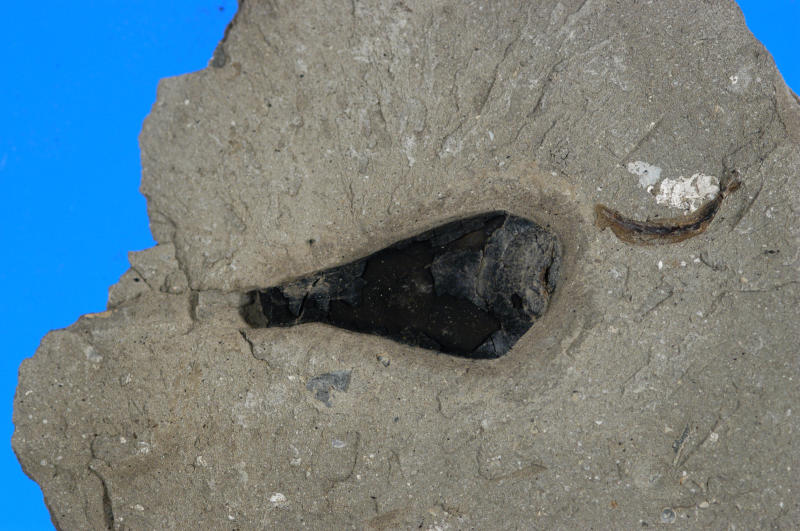Science News
The Color of Ancient Ink
May 22, 2012

Recent research has colored in our pictures of prehistoric Earth—from ancient birds to feathered dinosaurs. The keys to color in nature now (and then) are melanin pigments.
Generally animal tissue, made up mostly of protein, degrades quickly. Over the course of millions of years, the only traces an animal leaves behind are likely skeletal remains or an impression of the shape of the animal in surrounding rock. Scientists can learn much about an animal by its bones and impressions, but without organic matter they are left with many unanswered questions.
But melanin is an exception. Though organic, it resists degradation over the course of vast amounts of time.
“Out of all of the organic pigments in living systems, melanin has the highest odds of being found in the fossil record,” says John Simon of the University of Virginia. “That attribute also makes it a challenge to study.”
Simon and his colleagues used cutting edge techniques to study the melanin from 160 million-year-old cephalopod ink sacs. “We had to use innovative methods from chemistry, biology and physics to isolate the melanin from the inorganic material.”
The researchers weren’t even sure the melanin was still inside the small, inch-long sacs. They used a combination of direct, high-resolution chemical techniques to determine whether or not the melanin had been preserved. When they found melanin present, they then compared its chemical composition to the melanin in the ink of modern cuttlefish and found a match.
The researchers were somewhat amazed that the ink has changed so little over millions of years.
“It’s close enough that I would argue that the pigmentation in this class of animals has not evolved in 160 million years,” Simon explains. “The whole machinery apparently has been locked in time and passed down through succeeding generations of cuttlefish.”
As Simon tells National Geographic News:
As far as we can tell by everything we’ve thrown at it, the [ancient] ink is indistinguishable from modern ink…
… it’s a pretty good defense mechanism.
The scientists hope to use similar techniques to color-in more of ancient Earth’s organisms. Their current research is published in this week’s Proceedings of the National Academy of Sciences.
Image of ancient ink sac: University of Virginia